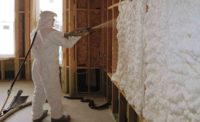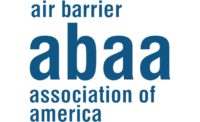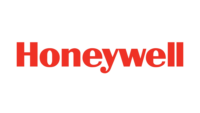In 1939, German industrial chemist Otto Bayer mixed two chemicals together and created the first polyurethane foam. With this event, Dr. Bayer essentially led the research team that discovered polyurethanes. In the decades that followed, military began to experiment with the new material ultimately utilizing polyurethane foam as a flotation material for boats, and polyurethane foam debuted in roofing with its first application on a rail car to fix a leaky roof. With these uses, chemists and developers began to realize the true potential of the material in building applications, but also recognized a need for better installation technology. In 1963, Fred Gusmer and Fred Werner pushed the industry forward when they created the first reliable machine to spray foam. Known as the FF, it was the first dedicated foam machine on the market. Gusmer also developed the model-C gun, which in turn became the model-D gun and dual heated hose assemblies that could be adjusted via thermostat.
These new equipment developments forever changed the industry. Spray application of polyurethane foam made the marketplace ripe for the utilization of the material on retrofit, aged roofing systems. Spray polyurethane foam had also been used in insulation applications since the 1960’s and use of it in the envelope has steadily grown over time. However, spray polyurethane foam insulation has experienced exponential growth during the past decade.
Checks and Balances
Widespread use of the product in building envelope assemblies including walls, ceilings, floors, attics, crawl spaces and roofing is linked directly to code-mandated improvements in energy efficiency, and specifically requirements for reduced building air leakage. Increasingly stringent buildings codes, such as the State of California’s Title 24 and International Code Council’s International Energy Conservation Code, are driving builders to utilize materials that reduce fossil fuel consumption and conserve energy. Likewise, the Net Zero Energy movement has pushed past its initial status as a visionary concept and into mainstream use where it has been proven both achievable and affordable. Homeowners and commercial building facility managers are now looking for ways to reduce their own carbon footprint and energy costs. In doing so, this will drive demand for higher performing structures and the materials that comprise them, such as spray polyurethane foam.
But the increased utilization of spray polyurethane foam brings added responsibility to all those involved in the handling and installation of the product to ensure best practices, safety and, ultimately, highest possible product and envelope performance. A few years ago the industry came together to enhance best practices and developed a comprehensive Professional Certification Program. Backed by a belief that the industry collectively could provide best practices and a complete view of what is important to the proper installation of SPF, the Spray Polyurethane Foam Alliance, which represents the educational and technical voice of the industry, led this program’s development. Offered to all parties involved in the installation of the product, the ISO-17024 compliant certification provides the industry with important checks and balances, to promote an environment whereby installers, contractors and suppliers meet proper requirements for the handling, storage, and application of the product.
Necessary Credentials
Now offered in both English and Spanish, the PCP is quickly being recognized as the industry’s primary certification program, giving individuals who participate to ensure safety and the highest possible performance of spray polyurethane foam. It also provides these individuals with the ability to better market themselves to customers, providing a credential that proves their knowledge, skills, abilities and professionalism.
Since launching in March 2013, the SPFA has issued a total of 2,386 examinations and provided hundreds of certifications to those that passed the exams and met other certification requirements, demonstrating rapid growth of the program. With continued testing refinements, easy testing for individuals at the widely-attended Sprayfoam Convention & Expo increased access to many of the test levels online, combined tests for higher levels, and other PCP advancements, the SPFA anticipates that the adoption of the certification will become widespread and eventually a routine credential for everyone in the industry.
“The SPFA PCP is a certification program written by the spray foam industry, for the spray foam industry,” says Kelly Marcavage, director of certification for the SPFA. “The spray foam professionals who carry the PCP certification card have chosen the pathway to professionalism that will shape the direction of our industry in the future.”











